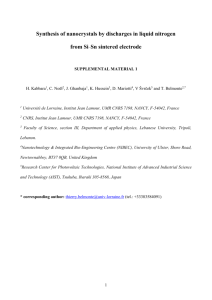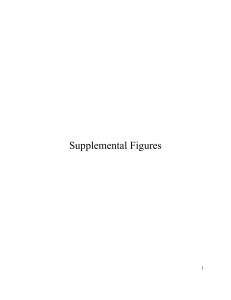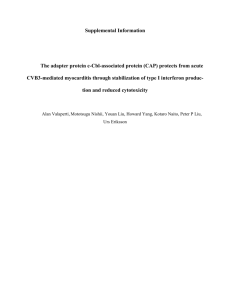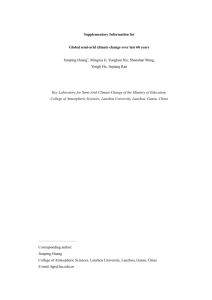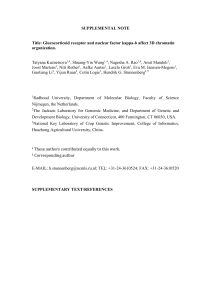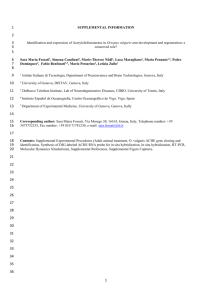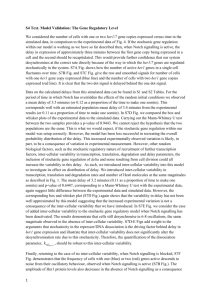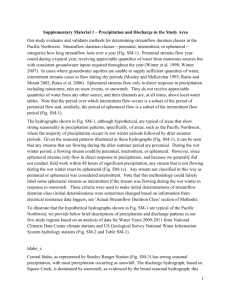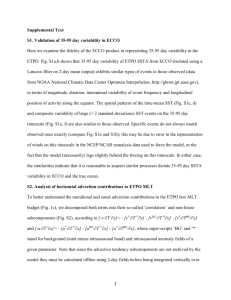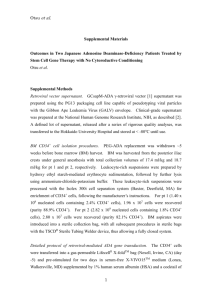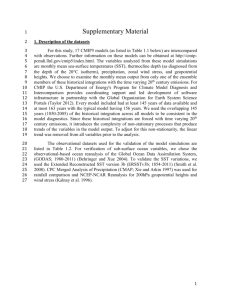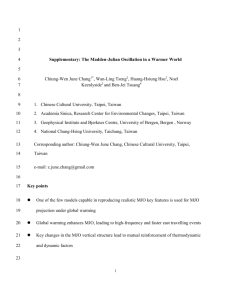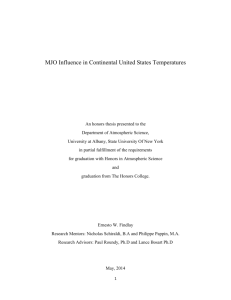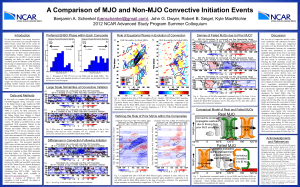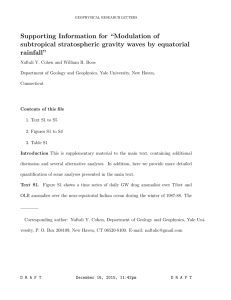README
advertisement
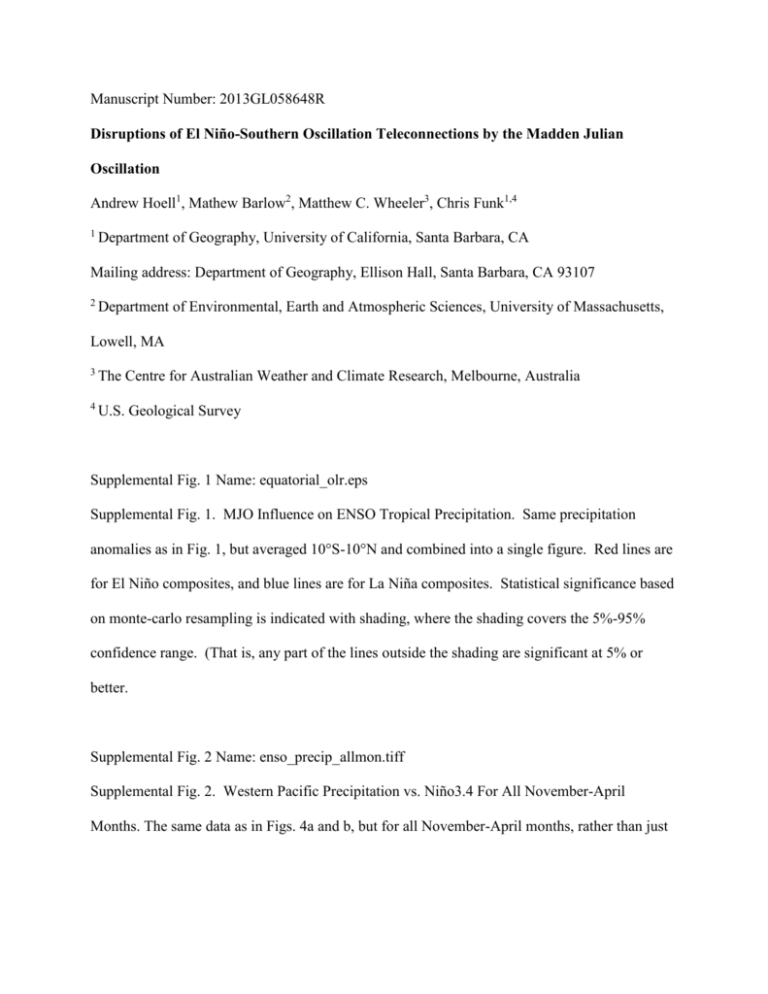
Manuscript Number: 2013GL058648R Disruptions of El Niño-Southern Oscillation Teleconnections by the Madden Julian Oscillation Andrew Hoell1, Mathew Barlow2, Matthew C. Wheeler3, Chris Funk1,4 1 Department of Geography, University of California, Santa Barbara, CA Mailing address: Department of Geography, Ellison Hall, Santa Barbara, CA 93107 2 Department of Environmental, Earth and Atmospheric Sciences, University of Massachusetts, Lowell, MA 3 The Centre for Australian Weather and Climate Research, Melbourne, Australia 4 U.S. Geological Survey Supplemental Fig. 1 Name: equatorial_olr.eps Supplemental Fig. 1. MJO Influence on ENSO Tropical Precipitation. Same precipitation anomalies as in Fig. 1, but averaged 10°S-10°N and combined into a single figure. Red lines are for El Niño composites, and blue lines are for La Niña composites. Statistical significance based on monte-carlo resampling is indicated with shading, where the shading covers the 5%-95% confidence range. (That is, any part of the lines outside the shading are significant at 5% or better. Supplemental Fig. 2 Name: enso_precip_allmon.tiff Supplemental Fig. 2. Western Pacific Precipitation vs. Niño3.4 For All November-April Months. The same data as in Figs. 4a and b, but for all November-April months, rather than just those months with weak intraseasonal variability (Fig. 3a) or strong intraseasonal variability (Fig. 3b), to show the general relationship. Supplemental Fig. 3 Name: supp_fig_3.eps Supplemental Fig. 3. Spatial Structure of Added MJO. The horizontal pattern of the MJO activity that is added to the atmospheric, in terms of a) the standard deviation, and b) an example of an individual phase. The idealized patterns are based on observed November-April variability and the magnitude is set to be comparable to a strong observed event, such as January 2007. The vertical profile of the added heating is a half-sine wave in the troposphere, consistent with deep tropical convection.






